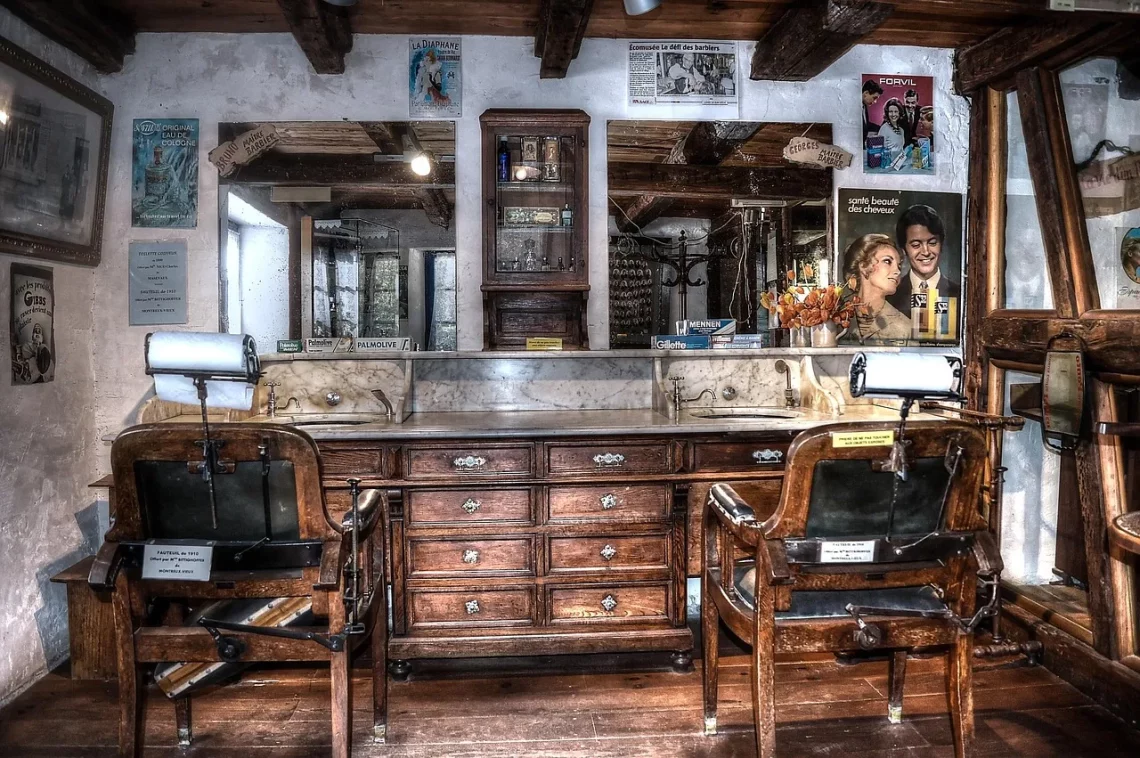
The Art of Precision Barbering: Crafting the Perfect Cut
The world of barbering is an intricate blend of skill, artistry, and personal expression. Each haircut is not merely a routine service but a unique opportunity to craft an identity. The precision barbering technique elevates this practice to an art form, allowing barbers to transform their clients’ appearances with finesse and creativity. As society evolves, so too does the appreciation for the craft of barbering. More than just a means to maintain personal grooming, a haircut can significantly affect one’s self-esteem and confidence.
In an era where individuality is celebrated, barbers have become the artists of personal style. The tools they wield—clippers, scissors, and combs—are extensions of their creative vision. Delivering the perfect cut requires not just technical proficiency but also an understanding of each client’s unique hair type, face shape, and personal style. Precision barbering involves meticulous attention to detail, ensuring that the final result reflects the client’s desires while also embracing contemporary trends.
As we delve deeper into the nuances of precision barbering, we uncover the essential elements that contribute to mastering this craft. From the importance of proper tools to the significance of client communication, each aspect plays a vital role in shaping the ultimate barbering experience.
The Importance of Quality Tools in Precision Barbering
In the realm of precision barbering, the tools of the trade are paramount. High-quality equipment not only enhances the barber’s ability to execute intricate styles but also ensures the safety and comfort of the client. The primary tools used in barbering include clippers, scissors, combs, and razors, each serving a distinct purpose.
Clippers are essential for achieving a clean, uniform cut. Professional-grade clippers come with various blade attachments, allowing barbers to create different lengths and styles effortlessly. Investing in a reliable pair of clippers can make a significant difference in the quality of the haircut. Additionally, maintaining these tools through regular cleaning and oiling ensures they function optimally, providing consistent results.
Scissors are another critical component of precision barbering. Barbers often rely on different types of scissors for various techniques, such as thinning, texturizing, or blunt cutting. Understanding the specific uses of each type can elevate a barber’s skill set, allowing for more versatile styling options. A well-balanced pair of scissors can improve cutting accuracy and reduce hand fatigue, enabling barbers to work efficiently without compromising quality.
Combs and brushes also play a crucial role in the barbering process. A good comb helps in sectioning hair and evenly distributing products, while brushes can assist in achieving a polished finish. The choice of comb or brush can affect the outcome of a haircut, making it essential for barbers to select tools that align with the hair types and styles they work with.
Ultimately, the significance of quality tools in precision barbering cannot be overstated. They are the foundation upon which a barber’s artistry is built. By investing in the right equipment and maintaining it properly, barbers can ensure that their skills shine through in every cut, contributing to a superior client experience.
The Art of Client Consultation and Communication
A successful haircut begins long before the first snip of the scissors; it starts with effective communication between the barber and the client. The consultation process is a vital step in precision barbering, allowing the barber to understand the client’s needs, preferences, and lifestyle.
During the consultation, barbers should ask open-ended questions to encourage dialogue. Questions about the client’s preferred styles, maintenance routines, and any past experiences with haircuts can provide valuable insights. For instance, a client may express a desire for a low-maintenance style that still looks polished. Understanding these preferences helps barbers suggest suitable options that align with the client’s lifestyle.
Visual aids, such as style books or online portfolios, can also be beneficial during consultations. These resources allow clients to visualize different styles and give barbers a clearer idea of what the client is looking for. Moreover, discussing hair texture and growth patterns is crucial, as these factors influence how a haircut will ultimately look and behave.
It’s equally important for barbers to establish trust with their clients. Creating a welcoming atmosphere where clients feel comfortable expressing their thoughts can lead to more successful outcomes. Listening actively and showing genuine interest in the client’s preferences fosters a positive relationship, which can result in repeat business and referrals.
In addition to verbal communication, non-verbal cues play a significant role in the consultation process. Observing a client’s body language can provide insights into their comfort level and satisfaction. If a client seems hesitant or unsure, a barber should take the time to address those concerns before proceeding with the cut.
Overall, effective client consultation and communication are essential components of precision barbering. By taking the time to understand clients’ desires and establishing a rapport, barbers can ensure that each cut is not only precise but also tailored to the individual, enhancing the overall experience.
The essence of precision barbering lies in mastering various cutting techniques that allow barbers to create flawless styles. Each technique serves a distinct purpose and, when executed correctly, can significantly enhance the overall look of a haircut.
One fundamental technique is the “fade,” which involves gradually shortening the length of the hair from the top down to the sides and back. Fades can vary in intensity, ranging from a subtle taper to a dramatic skin fade. Achieving a seamless fade requires skill and patience, as the barber must blend different lengths of hair without harsh lines. This technique is particularly popular among younger clients and those who prefer a modern, edgy look.
Another essential technique is “texturizing,” which adds dimension and movement to a haircut. Barbers can use various methods to texturize hair, such as point cutting or using thinning shears. These techniques create softer edges and prevent the hair from appearing too bulky or heavy. Texturizing is particularly useful for clients with thick or coarse hair, as it helps to manage volume while maintaining style.
Blunt cutting is another technique that is often employed in precision barbering. This method involves cutting hair straight across to achieve a clean, sharp look. Blunt cuts work well for clients seeking a classic, polished appearance, such as bobs or straight cuts. Mastering this technique requires an understanding of the client’s hair type and how it falls, ensuring that the final result is flattering.
In addition to these techniques, barbers must also be adept at using their tools efficiently. The way a barber holds their scissors or clippers can significantly impact the outcome of a cut. Practicing proper grip and hand positioning can lead to more controlled and precise cuts.
Ultimately, mastering precision techniques is critical for any barber aspiring to elevate their craft. By continually honing their skills and staying updated on the latest trends, barbers can deliver exceptional results that leave clients feeling satisfied and confident.
Creating a Unique Style: Personalization in Barbering
In today’s world, personalization is key to achieving a haircut that truly resonates with a client’s identity. Precision barbering goes beyond simply executing a popular style; it involves tailoring each haircut to the individual’s unique preferences and characteristics.
Personalization begins with understanding the client’s lifestyle, face shape, and hair type. For instance, a client with a round face may benefit from styles that add height and elongate their appearance, such as a pompadour or a quiff. Conversely, those with longer faces might opt for styles that add width, such as side-swept bangs or layered cuts. By considering these factors, barbers can create a look that enhances the client’s natural features.
Moreover, incorporating personal elements into a haircut can make it even more special. This could involve adding unique textures, patterns, or colors that reflect the client’s personality. For example, a bold undercut with intricate designs can convey an adventurous spirit, while a classic, understated style may appeal to someone who prefers a more refined look.
Another way to personalize a haircut is by introducing products that align with the client’s grooming habits. Recommending suitable styling products can help clients maintain their look at home. For instance, suggesting lightweight pomades for a natural finish or stronger hold gels for more defined styles can empower clients to replicate their salon look effortlessly.
Additionally, staying informed about the latest trends can help barbers introduce fresh ideas to their clients. By presenting new styles or techniques that align with a client’s preferences, barbers can keep the experience exciting and encourage clients to experiment with their looks.
In conclusion, creating a unique style through personalization is an essential aspect of precision barbering. By taking the time to understand each client’s individuality and incorporating their preferences into the haircut, barbers can deliver a truly exceptional service that resonates with clients long after they leave the barbershop.
In the world of precision barbering, mastery is a continuous journey that combines skill, creativity, and a deep understanding of clients’ needs. By focusing on the quality of tools, effective communication, mastering techniques, and personalizing styles, barbers can elevate their craft and create unforgettable experiences for their clients.
*Disclaimer: This article is not intended to provide medical advice. For any health-related issues, please consult a qualified healthcare professional.*




